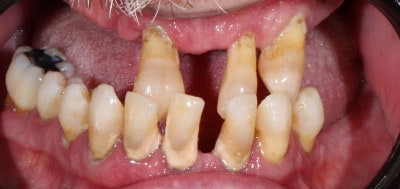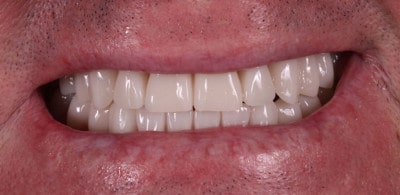When it comes to orthodontic treatments, traditional braces, and Invisalign clear aligners are two of the most popular options. But how do they differ, and what are the advantages and disadvantages of each one of them? In this article, we will explore the differences between braces and Invisalign, weigh their pros and cons, and guide you on how to make the right decision for your treatment. We will also cover aftercare, answer frequently asked questions, and provide insight on factors to consider before choosing between braces and invisalign in Perth WA.
Key Takeaways:
- Braces and invisalign® are popular orthodontic treatment options that differ in appearance, duration, comfort, and cost.
- Invisalign offers a discreet appearance, comfort, shorter orthodontist visits, possible insurance coverage, and effectiveness for a range of orthodontic issues.
- Disadvantages of Invisalign include discomfort, longer treatment duration, higher cost, efficacy limitations, and oral hygiene concerns.
- Braces are suitable for severe cases, more cost-effective, better for complex tooth movements, reliable, and work for all age groups.
- Disadvantages of braces include inconvenience, discomfort, less discreet appearance, maintenance challenges, higher cost, and longer treatment duration.
- Factors to consider when choosing between Invisalign and braces include correction needed, discreetness, treatment duration, dental insurance coverage, dental concerns, and the expertise of the orthodontist.
- Aftercare involves wearing retainers and maintaining proper oral hygiene.
- Invisalign treatment may take 6-18 months, while traditional braces can take up to three years.
- Invisalign aligners are virtually invisible, while braces are made of metal brackets and wires.
- Invisalign aligners are more comfortable and allow for easier oral hygiene, while braces may cause discomfort and require extra care.
- Cost varies, but dental insurance plans may cover part of the cost for both treatments.
- Invisalign is effective for mild to moderate issues, while braces can address more severe cases.
- Clear aligners are removable, while braces are fixed appliances.
- Regular orthodontist visits and compliance are crucial for successful treatment.
- Proper aftercare includes wearing retainers, maintaining oral hygiene, and following the orthodontist’s instructions.
- Invisalign may not be suitable for all patients, especially those with severe malocclusions.
- Individual preferences and dental concerns should guide the choice between Invisalign and braces.
- Consultation with an orthodontist is necessary to determine the most appropriate treatment option.
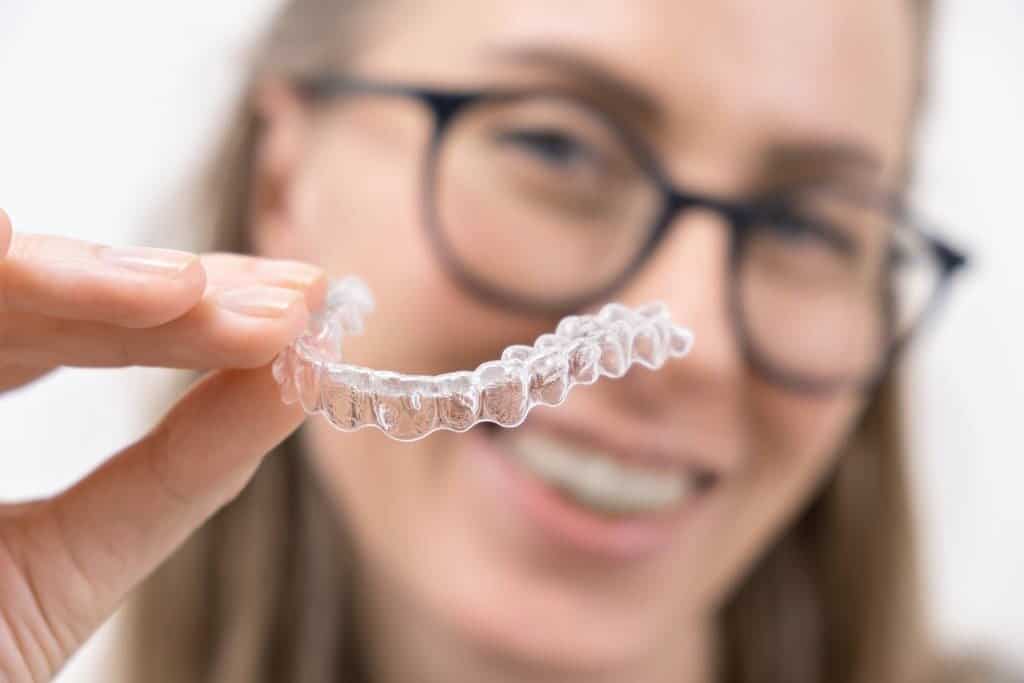
Table of Contents
- Differences Between Braces vs Invisalign
- Cost Comparisons
- Problems Treated
- Which Treatment Option Is Right For You?
- What Is Invisalign?
- Invisalign Advantages
- Invisalign Disadvantages
- Advantages Of Braces
- Disadvantages Of Braces
- Making The Right Decision For Your Treatment
- Aftercare: Retainers And Oral Hygiene
- Frequently Asked Questions
Differences Between Braces vs Invisalign
Orthodontic treatment is not just about aesthetics, but also oral health. The main purpose of Invisalign and braces is to help move teeth into the proper position. Traditional metal braces come to mind when most people think about orthodontic treatments. However, Invisalign aligners have been on the market and are becoming more popular than ever. There are advantages and disadvantages to both, so it is important to compare the differences between braces and invisalign® before deciding which treatment option is right for you.
Cost Comparisons
The cost of treatment is a significant factor, and it usually varies by location and the severity of the corrections required. Traditional metal braces cost ranges from $3,000 to $7,000, while the cost of Invisalign can range from $4,000 to $8,000. However, many dental insurance plans cover orthodontic treatments, so it is important to check with your provider.
Moreover, Invisalign aligners need to be worn for a specific duration for the treatment to be effective. Alternatively, braces may involve extra out-of-pocket expenses if they break or a bracket falls off. With Invisalign, broken aligners are quickly replaced without any additional charge.
Problems Treated
Both braces and Invisalign are effective orthodontic treatments. Traditional braces can correct more complex dental concerns like overbite, crossbite, underbite, and overcrowding. Invisalign aligners can only correct mild to moderate issues. However, advancements in clear aligner technology mean that more complex problems may now be treatable using Invisalign aligners.
It is important to note that oral hygiene is crucial during orthodontic treatment. This process requires extra attention to dental care to avoid plaque buildup, tooth decay, and gum disease. Dental concerns are less prevalent with Invisalign treatment compared to traditional metal braces. Braces make it challenging to clean the teeth and may cause staining or discolouration of teeth due to the metal bonding glue. Invisalign aligners are removable, which makes it easier for the patient to brush and floss as they normally would.
Which Treatment Option Is Right For You?
The answer may differ depending on individual preferences and dental concerns. Orthodontic braces are likely to be the best choice for people who want a more reliable and robust orthodontic solution. Invisalign aligners are the perfect option for people looking for a discreet treatment alternative that also provides an almost invisible mode of correction.
It is important to consult an orthodontist to ascertain the right orthodontic treatment for you. For children especially, a specialist will recommend braces as their more potent solution may give the best results. Nevertheless, Invisalign aligners are an ideal option for adults who are self-conscious about the appearance of metal braces. Additionally, progress monitoring plays a significant role in orthodontic treatment, regardless of whether Invisalign or braces are to be used.
What Is Invisalign?
Invisalign is a type of orthodontic treatment that uses clear aligners to gradually move teeth into their proper position. The aligners are made of BPA-free clear plastic that is virtually invisible, making them a discreet alternative to traditional metal braces.
Invisalign Advantages
When it comes to orthodontic treatments, there are a variety of options available to patients. However, Invisalign is gaining popularity as a discreet treatment option that offers several advantages over traditional braces.
Discreet Treatment Option
One of the biggest advantages of Invisalign is its discreet appearance. Because the aligners are made of clear plastic, they are virtually invisible and often go unnoticed by others. This is particularly beneficial for adults or anyone who may be self-conscious about wearing traditional metal braces.
More Comfortable
Invisalign aligners are made of a smooth, comfortable material that eliminates the irritation and discomfort associated with traditional braces. Additionally, Invisalign aligners are removable, which means that patients can eat, drink, and brush their teeth without restrictions. This flexibility makes Invisalign an ideal treatment option for patients who enjoy an active lifestyle or have dietary restrictions.
Shorter Orthodontist Visits
With Invisalign, patients typically require fewer visits to the orthodontist than with traditional braces. This is because Invisalign aligners are custom-made to gradually move teeth into their proper position, eliminating the need for frequent adjustments. Additionally, Invisalign patients can switch to a new set of aligners on their own, further reducing the need for dental visits.
Insurance Plans May Cover Invisalign
While dental insurance plans may not cover the full cost of orthodontic treatment, many do cover a portion of the cost. Invisalign is often covered under the same insurance plans that cover traditional braces, making it a more affordable option than many patients initially think.
Effective For A Wide Range Of Orthodontic Issues
Invisalign is effective at treating a wide range of orthodontic problems, including overcrowding, gaps, overbites, underbites, and crossbites. While Invisalign may not be suitable for all patients, it is a versatile treatment option that can correct several dental concerns.
Invisalign Disadvantages
While this discreet treatment option has many advantages, it also has its disadvantages. Below are some of the most common Invisalign disadvantages that patients may experience during their treatment.
Discomfort
One of the main concerns patients have with Invisalign aligners is discomfort. While Invisalign aligners are made of flexible and smooth plastic, they still need to apply pressure to the teeth to move them into the correct position. This can cause some discomfort and soreness, especially during the first few days of wearing new aligners. Additionally, some patients may experience discomfort when switching to a new set of aligners.
Length Of Treatment
Invisalign aligners work by gently applying pressure to the teeth and slowly moving them into the desired position. While this treatment method is effective, it does take longer for the teeth to move. Depending on the severity of the correction needed, treatment can take anywhere from 6 months to 18 months, and sometimes even longer. Lengthy Invisalign treatments can also be influenced by the patient’s level of compliance.
Cost
Invisalign treatment can be expensive, and many dental insurance plans do not cover it. The clear aligner technology required to create the aligners is more complex than producing traditional metal braces, which contributes to the higher Invisalign cost. While Invisalign aligners are discrete, convenience comes at a cost.
Efficacy And Limitations
Invisalign is an excellent treatment alternative for some patients, but not all. Patients requiring more extensive orthodontic treatments, such as severe malocclusions may need traditional metal braces. Clear plastic aligners cannot move teeth in every direction and more complex cases need to be treated with traditional braces. It is crucial to discuss your options with a licensed orthodontist to ensure that you get a proper diagnosis and treatment plan.
Oral Hygiene Concerns
Caring for your teeth while wearing Invisalign aligners can be challenging. While Invisalign aligners are removable, they must be worn for approximately 22 hours a day. Eating and drinking with aligners may lead to food and drink being trapped in the aligners. This causes a lack of proper oral hygiene to become a major oral health issue. If aligners are not cleaned and disinfected properly, it can lead to tooth decay and other dental concerns.
Advantages Of Braces
Orthodontic treatments have come a long way. While clear aligners, such as Invisalign, have become increasingly popular, traditional braces remain a popular and effective treatment option. Here are some of the advantages of choosing braces for your orthodontic treatment:
They Can Treat More Severe Cases
While clear aligners work well for mild to moderate correction needed, traditional braces are still the best option for severe or complex cases of crowding, spacing, or malocclusion. Braces can correct virtually any orthodontic issue.
Cost-Effectiveness
Braces are typically more affordable than clear aligners, making them a more accessible option for many patients. Additionally, some dental insurance plans may cover some or all costs of traditional braces, depending on the plan.
Better For Complex Tooth Movements
Traditional braces use a system of brackets and wires that allow for precise control and movement of teeth, ideal for complex tooth movements.
Long-Term Reliability
Traditional metal braces are composed of high-quality materials that are designed to last throughout the treatment process. Clear aligners, on the other hand, typically require replacement every two weeks, which can result in additional costs.
Less Risk Of Tooth Decay
Clear aligners must be removed daily for meals and oral hygiene, which can lead to an increased risk of tooth decay if proper oral care is not maintained.
Works For All Ages
While clear aligners are typically recommended for older teens and adults, traditional braces can be used on patients of all ages, making them a versatile treatment option.
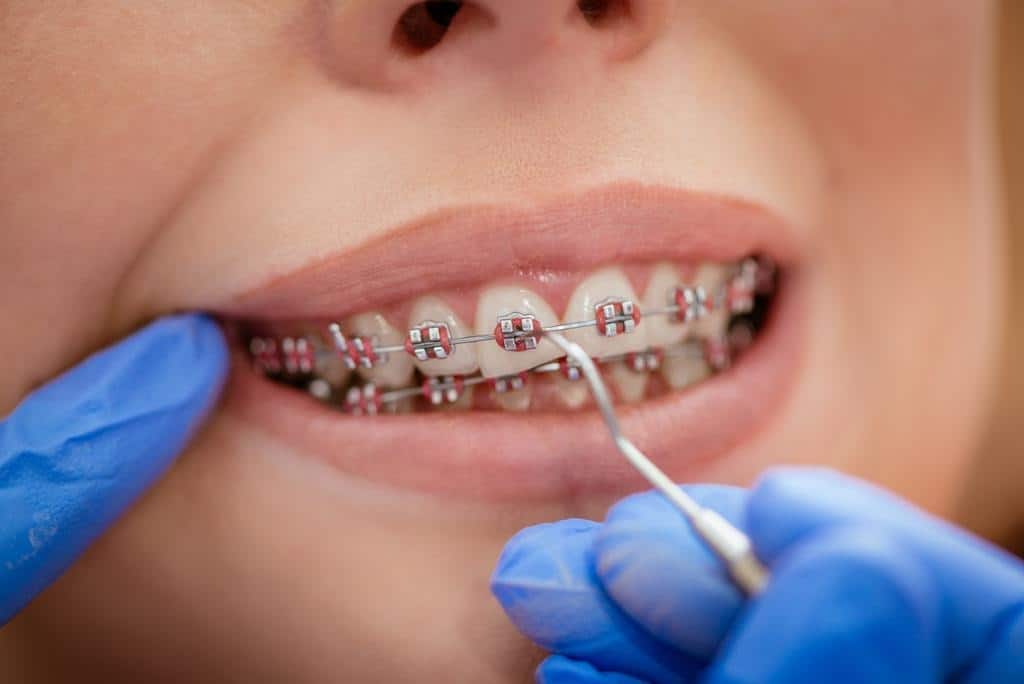 Disadvantages Of Braces
Disadvantages Of Braces
Orthodontic treatment is an essential element when it comes to correcting dental concerns like misaligned teeth and jaw problems. Traditional braces have been the go-to treatment option for many years. However, they come with various disadvantages that patients must consider when deciding to go through with treatment.
Inconvenience And Discomfort
Braces might make it hard to eat certain foods, including hard or sticky foods. They require proper care and attention to avoid staining or breaking the brackets, which can attract potential repair or replacement fees. The progressive tightening and adjustments made to the braces are uncomfortable and might require some time for the patient to recover from each appointment.
Discreet Treatment
Some patients may not feel comfortable wearing braces, as their metallic and bulky appearance tends to attract unwanted attention. Clear aligners provide a discreet treatment option that is more attractive to adults who desire a less-visible orthodontic treatment option. Clear aligners are clear plastic trays that move teeth into the desired position gradually. Invisalign aligners are the most popular type and provide a less-visible option for correcting dental issues.
Maintenance
Maintaining ceramic braces demands a strict hygiene routine to steer clear of tooth decay or gum disease because braces produce hard-to-reach locations that trap food particles and harmful bacteria. Patients will have to commit to a daily routine of brushing, flossing, and regular orthodontist visits to avoid complications; this might require a significant amount of investment in time and money. The cleaning procedure is even more challenging if braces break, loosen, or become infected.
Cost Of Braces
Orthodontic treatments are expensive and may not be covered by insurance plans. The price of braces ranges from $3,000 to $7,000 for both metal and ceramic braces. Clear aligners are not a cheaper alternative, and patients that choose this option should expect to pay thousands of dollars.
Length Of Treatment
Traditional braces require up to three years of treatment, which can be frustrating for patients. After each orthodontist visit, the treatment requires recovery time to alleviate aches and pain from the tightness of the braces. Hence, traditional braces can be an inconvenience for individuals with busy schedules that require timely appointments.
Making The Right Decision For Your Treatment
Getting orthodontic treatment is a big decision that can have lasting effects on your dental health and appearance. While there are a variety of treatment options available, the two most common are Invisalign clear aligners and traditional metal braces. Both have their benefits and drawbacks, so it is important to carefully consider your options before making a decision.
Factors To Consider
- Correction Needed: One of the most important factors to consider when choosing between Invisalign and traditional braces is the severity of the correction needed. While Invisalign aligners are very effective for mild to moderate correction, traditional braces may be a better option for more complex orthodontic issues, such as severe misalignments or major bite problems. It is important to consult with an experienced orthodontist to determine which treatment option will be most effective for your specific needs.
- Discreet Treatment Option: Many adults and teenagers are hesitant to get traditional metal braces due to concerns about their appearance. Invisalign clear aligners offer a discreet treatment option that is virtually invisible, making them a popular choice for those who want their teeth straightened without drawing attention to their orthodontic treatment. However, it is important to note that clear aligners may not be as effective in certain cases and regular compliance with wearing them is crucial in getting the desired results.
- Treatment Duration: Both traditional braces and Invisalign require a certain amount of time to correct dental issues, but the duration of treatment differs. While traditional braces typically require 24 to 36 months, Invisalign treatment generally takes less time and requires fewer office visits. A shorter treatment duration may be a significant factor to consider for patients with busy schedules and limited time to commit to orthodontic appointments.
- Dental Insurance: The cost of orthodontic treatment can be a major factor in the decision-making process for many patients. While both Invisalign retainers and metal braces can be expensive, most dental insurance plans will cover at least part of the cost of orthodontic treatment. It is important to review the details of your insurance plan to determine which treatment option will be most cost-effective for you.
- Dental Concerns: Some dental concerns may affect your treatment options. For example, those with tooth decay or gum disease may need to address those issues first before moving forward with orthodontic treatment. Additionally, some patients may need extractions before beginning treatment with traditional metal braces. An experienced orthodontist can help address any dental concerns and determine the best course of treatment.
- Expertise Of The Orthodontist: The final factor to consider when deciding on orthodontic treatment is the expertise and experience of the orthodontist. It is important to choose an orthodontist with experience in both Invisalign clear aligners and braces. Look for an orthodontist who is a member of the American Dental Association and the American Association of Orthodontists, as these organisations require rigorous training and adherence to high standards.
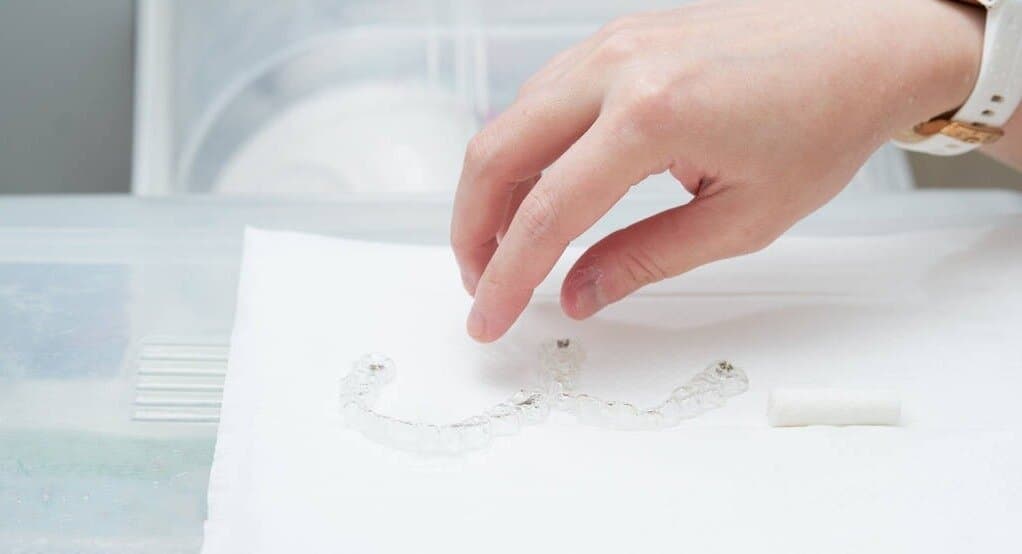 Aftercare: Retainers And Oral Hygiene
Aftercare: Retainers And Oral Hygiene
Once your orthodontic treatment is complete, your orthodontist will advise you to wear a retainer to maintain the alignment of your teeth. Whether you opted for traditional braces or clear aligner treatment like Invisalign, wearing a retainer is essential. Here is what you need to know about retainers:
- Types Of Retainers: There are two types of retainers available – removable and fixed. Removable retainers, usually made of clear plastic, fit over your teeth like a mouthguard. Fixed retainers consist of a wire attached to the back of your teeth. Your orthodontist will recommend the most suitable type for your treatment.
- Wearing Schedule: Your orthodontist may suggest wearing the retainer full-time initially and then gradually decreasing the duration over time. Adhering to your orthodontist’s instructions is crucial for optimal results.
- Oral Hygiene With Retainers: Maintaining proper oral hygiene is important to prevent bacteria buildup and tooth decay. Brush and floss your teeth daily, paying attention when cleaning around the retainer. If you have a removable retainer, take it out and gently brush it separately using mild soap and water.
- Retainer Cleaning: You can use retainer cleaning solutions like Retainer Brite, Polident, or SonicBrite to clean your retainer. Follow the manufacturer’s instructions carefully to ensure safe and effective usage, as improper use may damage the retainer.
- Retainer Replacement: Retainers can wear out over time and may need replacement. Your orthodontist will inform you when it is time to replace your retainer. Typically, removable retainers should be replaced every six months to a year, while fixed retainers last longer they may require repair or replacement if they become loose or damaged.
- Insurance Coverage: Dental insurance plans often cover orthodontic treatment, but limitations and exclusions may apply to certain treatments or retainers. Check with your insurance provider to understand the coverage provided by your plan.
For kids and teens, both lingual braces and Invisalign are suitable options. When deciding between traditional braces and Invisalign, consider the pros and cons of each one of them. While braces are less noticeable and cost less on average, Invisalign offers a better fit, greater comfort, and a more discreet appearance. Unlike braces, Invisalign trays are removable, making oral hygiene easier. However, braces are often recommended for complex cases. If you are unsure, consult with your orthodontist to choose the option that suits you best.
If you have any questions or need further assistance, get in touch with us – Radiant Smiles Dental Care. We are here to help you achieve great results with your orthodontic treatment, whether you opt for Invisalign, braces, or a combination of both.
Frequently Asked Questions
How Much Faster Are Traditional Braces vs Invisalign?
Braces and Invisalign work differently to move teeth, so the time it takes to achieve results varies. Overall, traditional braces are often considered to be faster at moving teeth than Invisalign aligners. While the length of treatment varies by patient, traditional braces usually take about 18 to 24 months to achieve the desired correction. In contrast, Invisalign treatment takes shorter, usually from 12-18 months. However, each case is different so the duration of treatment should be determined in consultation with your orthodontist
Which Is Less Painful Braces Or Invisalign?
Both braces and Invisalign can cause different kinds of discomfort like pressure, soreness, or irritation, but many patients find that Invisalign aligners are less painful than traditional metal braces. With traditional braces, you may experience pain or discomfort from the brackets and wires rubbing against your cheeks and tongue, or from the occasional poking of a wire that would have shifted out of place. The clear plastic aligners used in Invisalign are custom-made to fit your teeth, which makes them less likely to cause irritation or soreness during treatment.
Which Takes Longer Braces or Invisalign?
Every mouth is different, so the length of treatment will likely vary from person to person. Overall, traditional braces tend to take longer than Invisalign in most cases. Braces need to be adjusted every 4-6 weeks and can take up to 2 years for treatment to be completed. In contrast, Invisalign aligners are changed every 1-2 weeks and are often effective against mild to moderate orthodontic correction. This means that for minor problems, Invisalign can take about 6-12 months whereas traditional braces could take up to two years.


